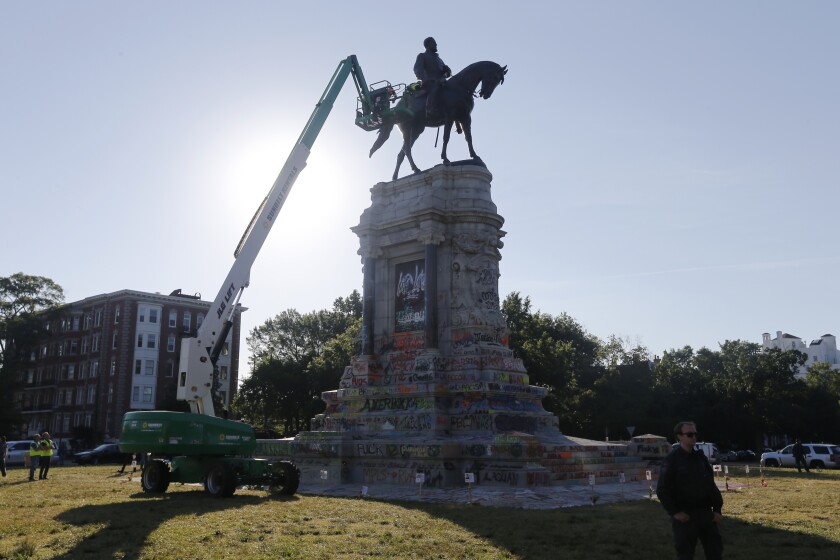 |
| Dustin Chambers/Reuters |
General David Petraeus wrote an impassioned article in the Atlantic this week about the need to change the names of military bases that for over a century have been named after Confederate generals and to recalibrate iconic remembrances such as statues commemorating Robert E. Lee at West Point — points of reference he reminds us that have been central in his own experience and career.
His relevant points were twofold and ostensibly rational: Commanders such as Bragg and Benning (Petraeus proposes the renaming of other eponymous bases as well) were not especially effective commanders worthy of such majestic base commemoration. In some cases, as Petraeus notes, they were not even highly regarded by their peers. No one, certainly, would wish to defend the worldview of a Braxton Bragg. And, as Petraeus put it, as “traitors” they fought for an ignoble cause that perpetuated slavery. (Of course, the logic of renaming should then apply to the northern California community of Fort Bragg, also named after the unattractive Braxton Bragg — an idea to which some in the Democratic California legislature failed to win over the town’s mayor in 2015).
I think Petraeus is in many ways correct about his anguish. Yet, the bases were named not so much to glorify overt racists as for a variety of more mundane, insidious reasons in the late 19th and early 20th centuries — from concessions to local southerners where many of these bases were to be located, to obtain bipartisan congressional support for their funding, and to address the need in the decades-long and bitter aftermath of the Civil War to promote “healing” between the still hostile former opponents.
We should note that not all Confederates were quite the same in terms of our current moral reexaminations. General Longstreet differed from, say, a General Nathan Bedford Forrest, not necessarily on the basis of their undeniable respective competency or even clear culpability in perpetuating the war, but on their quite different efforts at postwar outreach and healing. But then again such assessments would be to assume that we are all mortals and not deities.

Again, is this moment really the proper time to begin renaming bases and removing statues? We are in a middle of a national frenzy and chaos, in which such major decisions won’t always be done systematically and carefully to heal rather than further to inflame the country. I have long questioned in print the deification of Robert E. Lee, but after 150 years I think we can wait a few more months for introspection and discussion before damning him from memory. This week Christopher Columbus was toppled — with the predictable response, why not some of those statues in the U.S. Capitol’s National Statuary Hall Collection? That idea has next only fueled further iconoclasm, which has quickly progressed to why not the slave-owning Washington and Jefferson and their eponymous D.C. landmark monuments, though perhaps cranes and woke engineers rather than mere ropes and hammers will be needed to topple an obelisk or crash a dome, purported testaments to slavery. Who is to say that one slave owner is any different from another, given mortal sin allows no compensation or calibration, no allowance for, or distinction of, a Jefferson from a Forrest?Read the rest from Victor Davis Hanson HERE.
If you like what you see, please "Like" us on Facebook either here or here. Please follow us on Twitter here.

No comments:
Post a Comment